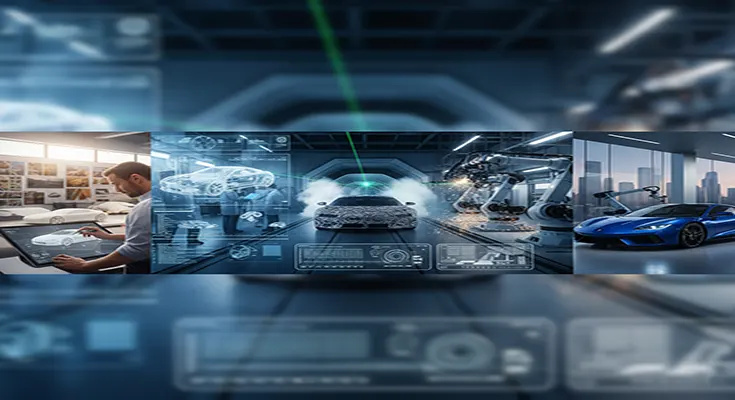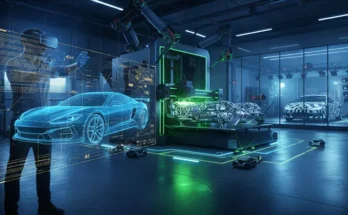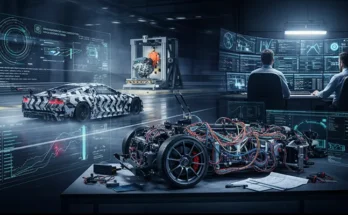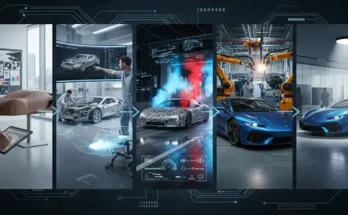The launch of a new vehicle model represents the culmination of a multi-year, multi-million-dollar effort, involving thousands of specialists across design, engineering, and manufacturing. More than just a collection of parts, a new car is a strategic product born from a meticulous, multi-stage process that balances aesthetic vision with technical feasibility, market demand, and regulatory compliance.
Here is an overview of the key phases car manufacturers follow to design and develop new vehicle models, often taking up to five or more years from initial concept to market launch.
Phase 1: Concept and Requirements Definition
The journey begins not with a drawing, but with a strategic decision rooted in market data.
- Market Research & Strategy: Teams analyze evolving consumer needs, global mobility trends, competitor offerings, and regulatory changes (e.g., emissions standards, safety rules). This research defines the new vehicle’s Business Case: its target audience, price point, unique selling proposition (USP), and projected sales volume.
- Concept Development: Based on the market study, high-level product goals and specifications are defined. This includes the vehicle type (e.g., SUV, EV Sedan, pickup), overall size, core performance targets (e.g., range, acceleration, fuel economy), and key features.
- Feasibility Study: This critical assessment determines if the concept can be realistically developed within the allocated budget, timeline, and technical constraints, ensuring a positive Return on Investment (ROI).
Phase 2: Design and Creative Development
The aesthetic and ergonomic identity of the vehicle takes shape in this phase, involving a close collaboration between art and science.
- Initial Sketching & Rendering: Automotive designers begin with hand-drawn sketches and digital renderings, translating the concept into a visual form. This involves Exterior Design (proportions, shape, surfaces) and Interior Design (cockpit layout, comfort, and ergonomics).
- Digital Modeling (CAD): The most promising sketches are translated into detailed 3D Computer-Aided Design (CAD) models. These models are essential for early technical analysis, virtual simulations, and checking the “packaging”—ensuring all mechanical components (engine, suspension, electric batteries) fit within the designed body.
- Clay Modeling: Even with advanced digital tools, a full-scale (1:1) physical model, traditionally made from industrial plasticine clay, remains the industry standard. Designers and engineers use this model to assess the vehicle’s form, light reflections, and proportions in three dimensions before final design approval (known as “design freeze”).
- Color and Trim (C&T): A specialized team selects and tests materials (fabric, leather, metal, plastics) and exterior paint colors, defining the tactile and visual quality of the final product.
Phase 3: Engineering and Prototyping
With the design finalized, the focus shifts to ensuring the vehicle is functionally sound, safe, and manufacturable.
- Detailed Engineering: Automotive engineers refine every system—powertrain, chassis, suspension, electrical architecture, and software. They work to adhere to the precise styling data provided by the design studio, balancing aesthetics with performance and safety requirements.
- Virtual Testing and Simulation: Extensive use of computer-aided engineering (CAE) is made to simulate crash tests, aerodynamics, thermal performance, and durability long before a physical prototype is built, saving time and cost.
- Prototype Construction: Physical prototypes, often called “mules” or pre-production vehicles, are constructed using production and experimental parts.These vehicles are used for real-world testing.
- Supplier Collaboration: The manufacturer engages a network of global suppliers to source and integrate thousands of high-quality components, from tires and headlights to complex electronic control units.
Phase 4: Testing, Validation, and Manufacturing Setup
This phase is dedicated to rigorous verification and preparing the factory for mass production.
- Rigorous Validation: Prototypes undergo extensive, often brutal, testing:
- Safety: Full-scale crash testing (to meet government and consumer rating standards like NCAP).
- Durability: Endurance testing across extreme conditions (hot weather, cold weather, rough roads) to ensure longevity.
- Performance: Testing for handling, braking, and achieving target fuel economy/EV range.
- Compliance: Ensuring adherence to all global emissions and safety regulations.
- Manufacturing Planning: Production engineers finalize the assembly line process, design the necessary tooling and machinery, and run pilot production builds to test the process for efficiency and quality control.This is the last chance to iron out kinks before committing to mass production.
Phase 5: Production Launch and Post-Launch Support
The culmination of the process is the vehicle’s introduction to the market.
- Mass Production: With all systems validated, the vehicle moves into full-scale production, beginning with the Body Shop (welding the frame), followed by the Paint Shop, and finally the Assembly Line (installing the interior, engine, and electronics).
- Quality Control: Stringent quality checks are conducted at every stage to ensure the final product meets the brand’s standards.
- Market Launch: The vehicle is shipped to dealerships worldwide, supported by comprehensive marketing and advertising campaigns.
- Post-Launch: The manufacturer continues to monitor product quality, collect customer feedback, and issue necessary software updates or refinements, managing the vehicle throughout its product lifecycle until it is eventually redesigned or retired.
The development of a new vehicle model is a profound exercise in coordination, marrying the artistic vision of designers with the practical realities of engineering and the economics of mass production. It is a testament to the collaborative power of modern product lifecycle management.





